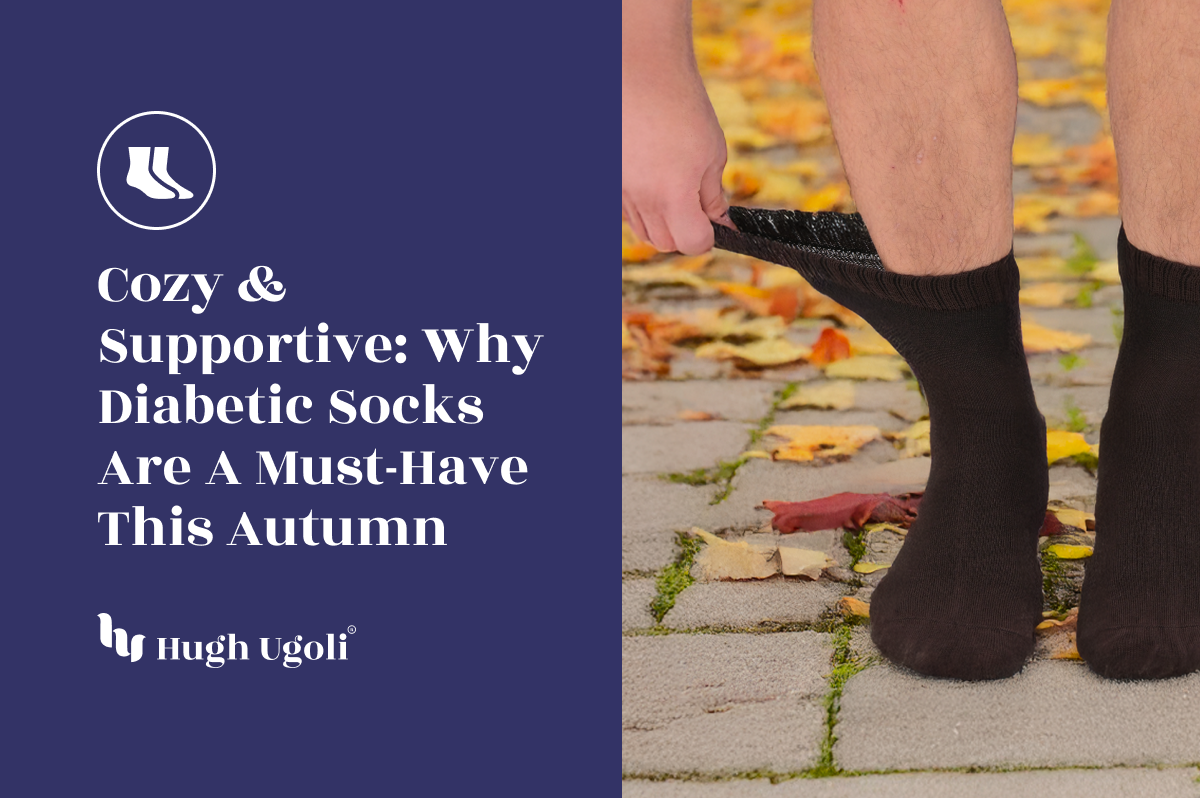Autumn is a season of transition—shorter days, crisp mornings, and cooler evenings. For many, it’s a welcome change from the summer heat. But for people with diabetes, fall weather can bring new challenges for foot health. Cold, damp conditions may worsen poor circulation, increase the risk of fungal infections, and make feet more prone to irritation. That’s why this season, diabetic socks are designed to do more than just provide warmth—they’re essential for protection, comfort, and long-term care of the diabetes foot.
Why Regular Socks Aren’t Enough
Most regular socks come with binding tops that can restrict blood flow. They may trap moisture, rub against the skin, or fail to provide the necessary cushioning for fragile feet. For someone managing foot problems caused by diabetes, this can lead to blisters, sores, or infections that take longer to heal. Simply put, traditional socks often don’t meet the unique needs of those with diabetes, especially during colder months.
How Diabetic Socks Support Foot Health
Diabetic socks are designed with specialized features that go beyond comfort. They aim to minimize risks while maximizing all-day support. Some key socks features include:
-
Moisture wicking fabrics: These keep feet dry, reducing the chance of fungal growth.
-
Non-binding tops: Promotes healthy blood flow by avoiding tight constriction.
-
Extra padding: Protects sensitive skin, cushions pressure points, and helps prevent blisters.
-
Seamless design: Eliminates irritation and reduces friction that can cause sores.
-
Antimicrobial properties: Many diabetic socks include treatments that reduce the risk of foot infections.
Autumn-Specific Benefits
Fall brings its own set of foot-care challenges. Wet leaves, sudden rain showers, and chilly mornings mean feet are exposed to moisture and temperature fluctuations. For people with diabetes, these conditions can worsen existing issues or create new risks. Moisture wicking properties in diabetic socks ensure that even if shoes get damp, feet stay dry. Extra padding keeps feet warm on brisk walks, while the gentle fit supports circulation, making them an autumn essential.
Reducing the Risk of Complications
For those with diabetes foot conditions, the smallest blister or sore can escalate quickly. By wearing diabetic socks daily, you’re reducing the risk of developing ulcers, infections, or long-term damage. Compared to regular socks, they provide layers of proactive protection. Whether it’s preventing blisters, minimizing sweat buildup, or enhancing blood flow, each feature is intentionally crafted to protect against complications.
Comfort Meets Style This Season
Years ago, diabetic socks had a reputation for looking purely medical. Today, high-quality versions blend cozy warmth and supportive function with subtle, stylish designs. In autumn-inspired colors and breathable knits, they pair seamlessly with everyday outfits. You don’t have to choose between practicality and aesthetics—modern diabetic socks deliver both.
Product Spotlight: Bamboo Comfort for Autumn
One standout option this fall is the Hugh Ugoli Bamboo Diabetic Crew Socks. These socks feature moisture wicking properties, natural antimicrobial properties, and soft non-binding tops that support circulation without pressure. The bamboo fabric offers warmth on cold mornings while remaining breathable indoors—making them a versatile choice for autumn days. 👉 Explore Hugh Ugoli Bamboo Diabetic Crew Socks
Daily Foot Care Tips for People with Diabetes
-
Inspect your feet daily for cuts, blisters, or redness
-
Wash and dry thoroughly, especially between the toes
-
Rotate socks daily to keep feet fresh
-
Pair diabetic socks with well-fitted shoes to further reduce the risk of injuries
-
Seek professional guidance if you notice persistent foot problems
Wrapping Up
Autumn may be cozy, but it also demands extra attention to foot care—especially for those living with diabetes. The right pair of socks makes a big difference in comfort and long-term health. By choosing diabetic socks with moisture wicking fabrics, extra padding, and non-binding support, you can stay warm, improve circulation, and protect against common foot issues like fungal infections and sores.
If you’d like more insights into supporting foot health during the cooler months, check out our blog The Ultimate Guide to Diabetic Socks: Comfort, Style, and Safety—it’s packed with practical advice to help you confidently wear diabetic socks as part of your daily care routine.

















